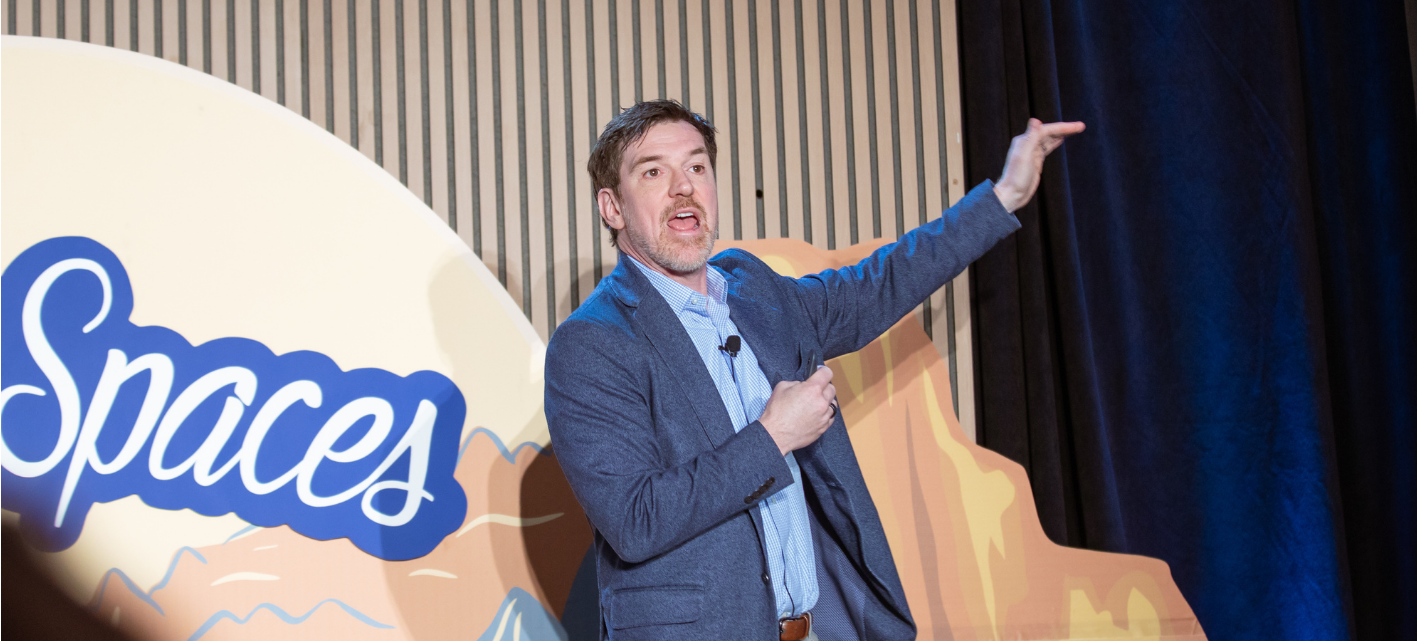What’s stopping AI adoption in healthcare facilities? It's not budget. It’s not complexity. According to NYU Stern's School of Business & Chief AI Architect, Conor Grennan, it’s our brains.
At HealthSpaces, Grennan gave a clever and relatable take on why so many powerful AI tools are sitting idle on desktops—and what facilities leaders can do about it.
His advice? Stop thinking of AI as software. “It’s not a search bar. It’s not Excel. It’s a person,” he said. “It learned to talk the way we did—by reading everything.”
He’s not running facilities, but Grennan’s been helping the team at NYU Stern use AI to tackle familiar pain points: tight space, complex workflows, and the pressure to do more with less.
We think it’s a search engine. It’s not.
One of the biggest barriers to adoption is mindset. Grennan explained that when most people open ChatGPT, their brain treats it like Google: type in a question, get an answer, walk away.
“When your brain sees that blank ChatGPT screen, it thinks it’s Google,” he said. “So we type something in, get a response, and walk away. But generative AI isn’t command-and-response. It’s collaboration.”
The treadmill problem
The same mental shortcut shows up in how organizations roll out AI. We focus on launching tools, not changing habits.
“You can put a $10,000 treadmill in someone’s house,” he said, “but unless they use it, it doesn’t change anything. Same with AI.”
Grennan pointed out that we often treat AI rollouts like software implementations—assuming a one-time install or training will lead to adoption. But tools like ChatGPT don’t require technical training. They require behavior change. And behavior is much harder to shift than learning a new system. “The challenge isn’t the learning curve,” he said. “It’s the doing curve.”
The Costa Rica mindset shift
To reframe how we approach AI, Grennan shared a simple analogy:
“If you’re planning a trip and you meet the head of the country’s tourism board, do you just ask for the top 10 things to do and walk away? Of course not,” he said. “You’d talk about who’s going, what they like, what matters to them. That’s how you get the good stuff.”
That, he explained, is how we should approach tools like ChatGPT. Not with a one-time query, but with ongoing dialogue. The more you engage, clarify, and adjust, the better your results.
So, how do you help your team shift?
Grennan offered three practical, human-first strategies to help teams build stronger AI habits:
- Start with what you do.
Don’t ask, “What can AI do?” Ask, “What do I already do that takes too long or too much effort?” Then explore how AI might help. - Talk like a human.
“There’s no perfect prompt,” he said. “Just write how you’d talk to a colleague—then follow up, push further, and stay curious.” - Give people a starting point.
Blank screens stall progress. Use templates, examples, or small, low-stakes tasks to get people moving.
It's not about learning the tool. It’s about using it.
Grennan’s talk was a reminder that AI isn’t just a future thing—it’s a right now thing. And for facilities leaders, success doesn’t start with training sessions or new platforms.
“Stop thinking of AI as a tool,” he said. “Start thinking of it as a teammate.”

Posted by
Collaborate with your Peers!
HealthSpaces is a community for people that plan, design, build and operate spaces where healthcare is delivered.
June 7-9, 2026 | Braselton, GA
Learn More




-4.png)
-Dec-09-2025-05-48-44-4379-PM.png)
-4.png)
-1.png)
-2.png)

Comments